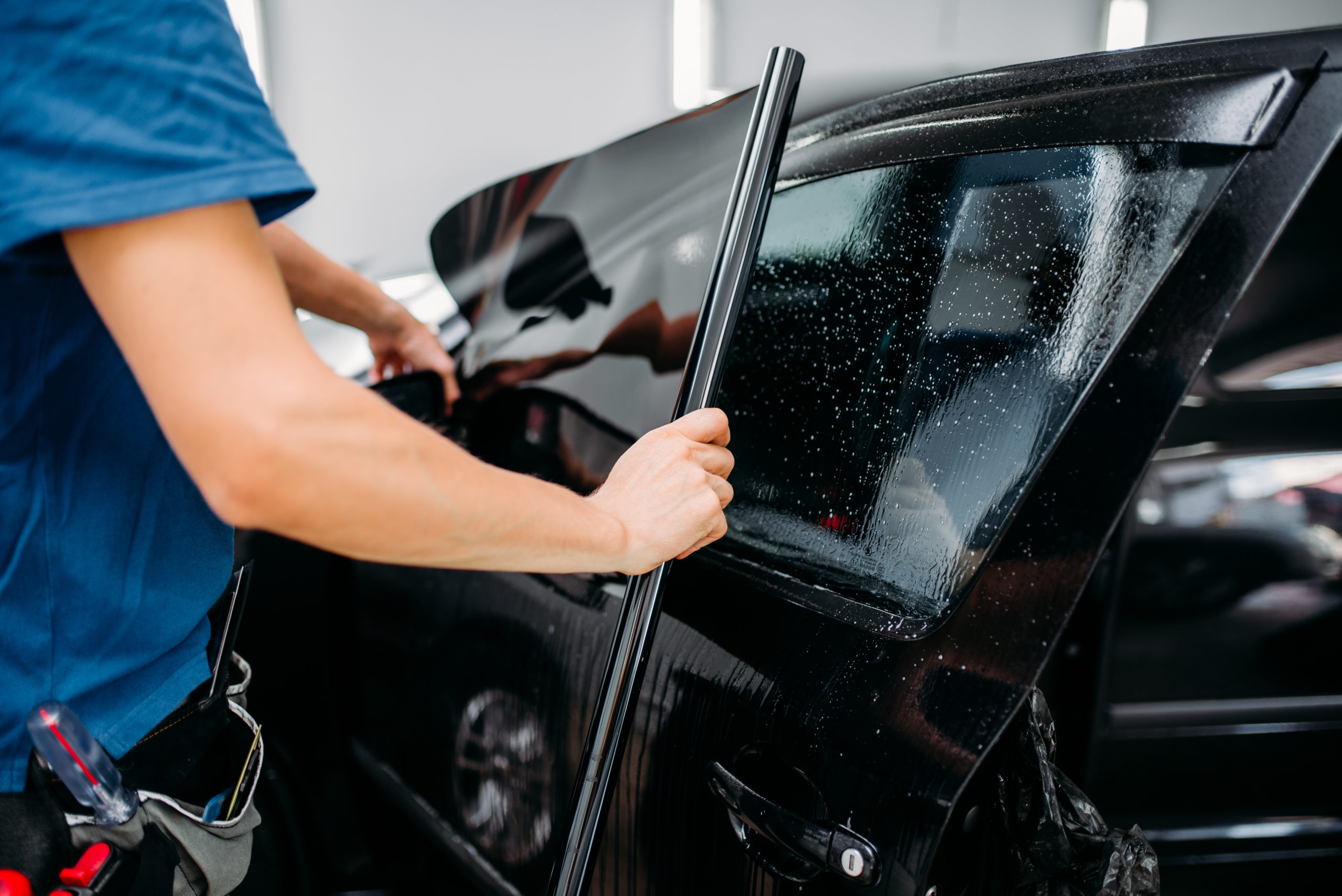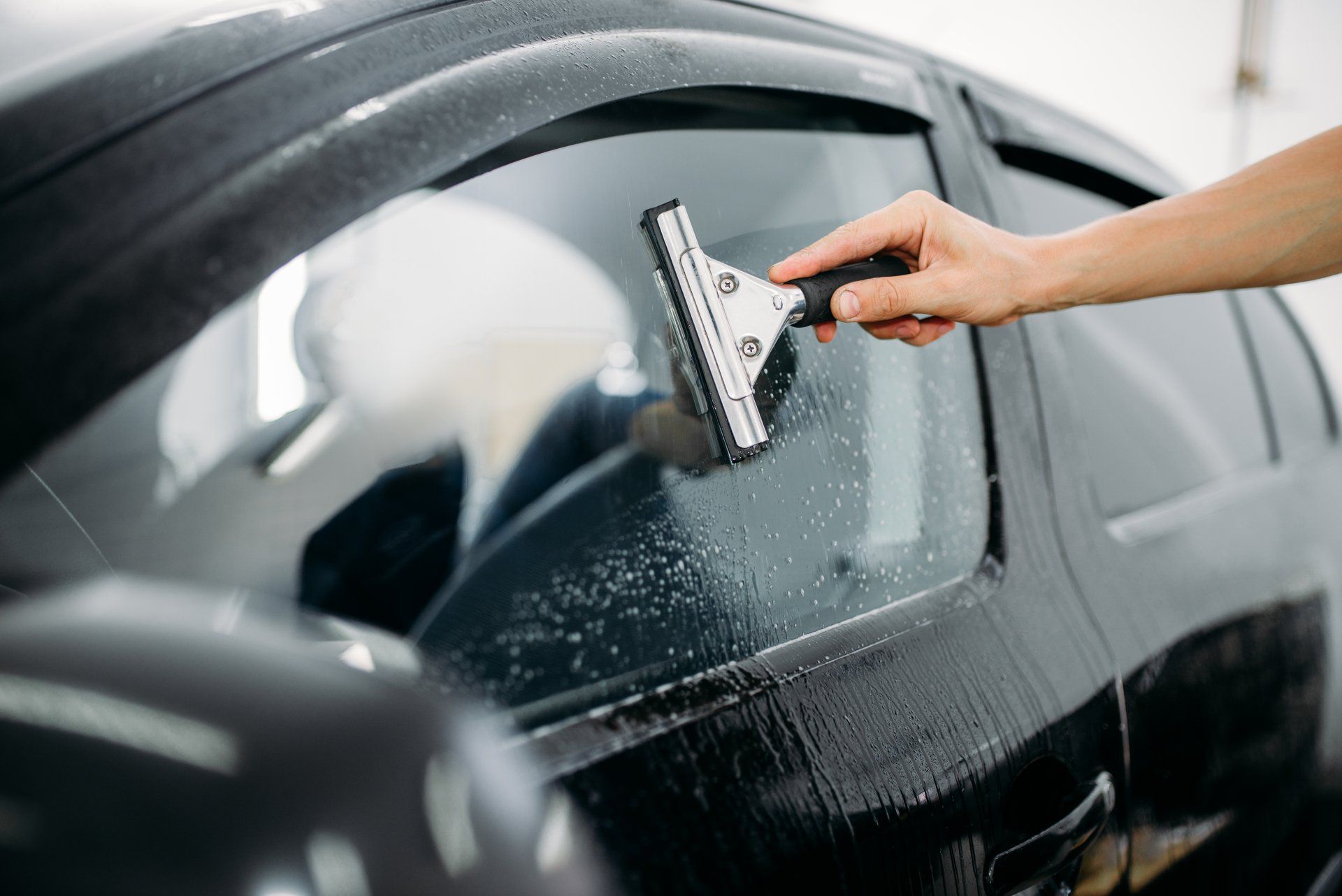Window Tinting Options: Locate the Right Shade for Your Design and Demands
Picking the ideal window tint for your automobile entails a mindful factor to consider of different aspects, consisting of individual appearances, useful needs, and lawful limitations. With choices ranging from light tintss that offer minimal personal privacy to darker shades that enhance privacy, the selections can be frustrating. window tinting. Comprehending the implications of visible light transmission (VLT) percents and the advantages of various materials is crucial in making an informed option. As you consider your choices, you may ask yourself exactly how these aspects interplay to develop not simply a look, yet a customized experience when driving.
Recognizing Window Tinting Degrees
When considering window tinting, it is important to understand the different levels of tint available, as they significantly impact both visual appeals and capability. Window tinting is classified based on Noticeable Light Transmission (VLT) percentages, which suggest the quantity of light enabled to travel through the glass. The VLT portion can vary from extremely light (over 70%) to very dark (listed below 5%)
The main degrees of tint consist of clear, which provides UV defense without changing presence; light tint (over 50% VLT), which somewhat lowers glare while keeping exposure; tool tint (around 35% VLT), striking an equilibrium between personal privacy and light transmission; and dark tint (listed below 20% VLT), providing considerable personal privacy and heat reduction yet restricting external presence.
Understanding these levels is vital as they can impact driving security, lawful conformity, and personal convenience. Furthermore, local guidelines commonly dictate permissible tint degrees, differing by state or district. Before selecting a color, it is suggested to study and ensure adherence to these policies while thinking about personal preferences for style and functional advantages.
Popular Tint Tone Explained

Among the most preferred options is the traditional dark tint, usually varying from 20% to 5% VLT (Visible Light Transmission) This shade supplies maximum personal privacy and a smooth, innovative look. It properly blocks UV rays and warmth, making it optimal for bright climates, though it might limit presence in the evening.
Conversely, lighter shades such as 35% or 50% VLT give a more refined appearance while still supplying some level of privacy. These shades are best for those looking for a balance in between appearances and performance, as they permit much better presence and adhere to various legal criteria.
Another emerging choice is the ceramic tint, which can come in a range of tones - window tinting. It offers exceptional warm rejection and UV security without dramatically changing the lorry's look

Lawful Regulations for Window Tinting
Understanding the legal guidelines surrounding window tinting is vital for automobile owners wanting to customize their autos. Each state in the united state has particular regulations regulating the darkness or agility of window tintss, frequently gauged by Visible Light Transmission (VLT) percentage. VLT describes the amount of light that can travel through the film and the glass incorporated.
In numerous states, laws dictate various VLT percentages for various windowss, consisting of front windshields, side windowss, and back windowss. Some states might allow a color of 70% VLT for windscreens while permitting darker tintss for back windowss. Additionally, particular states have constraints on reflective tintss, which can produce glow for various other drivers.
Failing to abide by these policies can cause fines, mandated removal of the tint, and enhanced insurance policy costs. Automobile proprietors need to speak with regional legislations or state DMV web sites to guarantee they are within lawful limitations prior to waging setup. Recognizing these guidelines not just assists prevent lawful consequences however likewise guarantees a risk-free driving experience.
Benefits of Different Tint Materials
Exploring the advantages of numerous tint products exposes considerable benefits that can enhance both the functionality and visual allure of an automobile. Each material provides distinct characteristics matched to details demands and preferences.
Dyeded window films are prominent for their affordability and capacity to decrease glare. Metalized films, on the various other hand, offer superior warmth reduction and UV protection due to their reflective buildings.
Ceramic window films represent a costs choice, providing phenomenal warm rejection while keeping exposure. They are non-metallic, hence preventing any signal interruption, and are highly long lasting, resisting scrapes and fading over time. Furthermore, ceramic films do not consist of dyes, guaranteeing a longer-lasting look.
Finally, crossbreed films incorporate elements from dyeded and metalized options, using a balanced efficiency in regards to heat denial, glare decrease, and cost. Each tint product serves Find Out More one-of-a-kind purposes, enabling vehicle owners to pick the best suitable for their way of living and aesthetic preferences, inevitably enhancing their driving experience.
Selecting the Right Tint for You
Finding the right window tint involves thinking about numerous elements, including individual preferences, automobile kind, and local policies. Examine your personal style and desired level of privacy, as these will certainly assist your selection of tint shade. Darker tintss provide enhanced privacy however may not appropriate for all motorists, specifically those that prefer a more open feel inside their automobile.
Following, consider your lorry type, as the shapes and size of windowss can affect the efficiency of particular tintss. Bigger windowss might benefit from reflective tintss that decrease glare while smaller windowss might be more suited to dyeded films that use refined visual appeals.
Furthermore, it's essential to inspect neighborhood policies relating to window tinting. Several states impose restrictions on the permitted darkness and reflectivity, particularly for front windowss. Compliance with these regulations is vital to make certain and prevent penalties safety.
Last but not least, assess the tint anonymous material that finest matches your requirements. Alternatives include dyeded, metalized, ceramic, and hybrid films, each offering one-of-a-kind benefits associating with heat being rejected, UV defense, and toughness. By considering these aspects, you can confidently select a home window tint that straightens with your style and practical needs.
Conclusion
In final thought, picking the appropriate window tint calls for careful factor to consider of numerous factors, consisting of VLT percents, local policies, and the wanted visual. Different tint materials use one-of-a-kind benefits that can enhance car convenience and defense. By extensively understanding the available choices and straightening them with functional demands and individual preferences, one can achieve an ideal balance in between design and functionality in window tinting options.
Choosing the proper window tint for your lorry entails a careful consideration of different variables, consisting of personal helpful site aesthetic appeals, useful needs, and lawful constraints. Each state in the U.S. has particular legislations controling the darkness or agility of window tintss, often determined by Visible Light Transmission (VLT) percentage. Some states may allow a tint of 70% VLT for windshields while permitting darker tintss for back windowss.Discovering the right window tint involves thinking about numerous aspects, including personal preferences, car type, and local policies.In final thought, selecting the suitable window tint calls for mindful factor to consider of numerous aspects, including VLT portions, regional guidelines, and the preferred aesthetic.